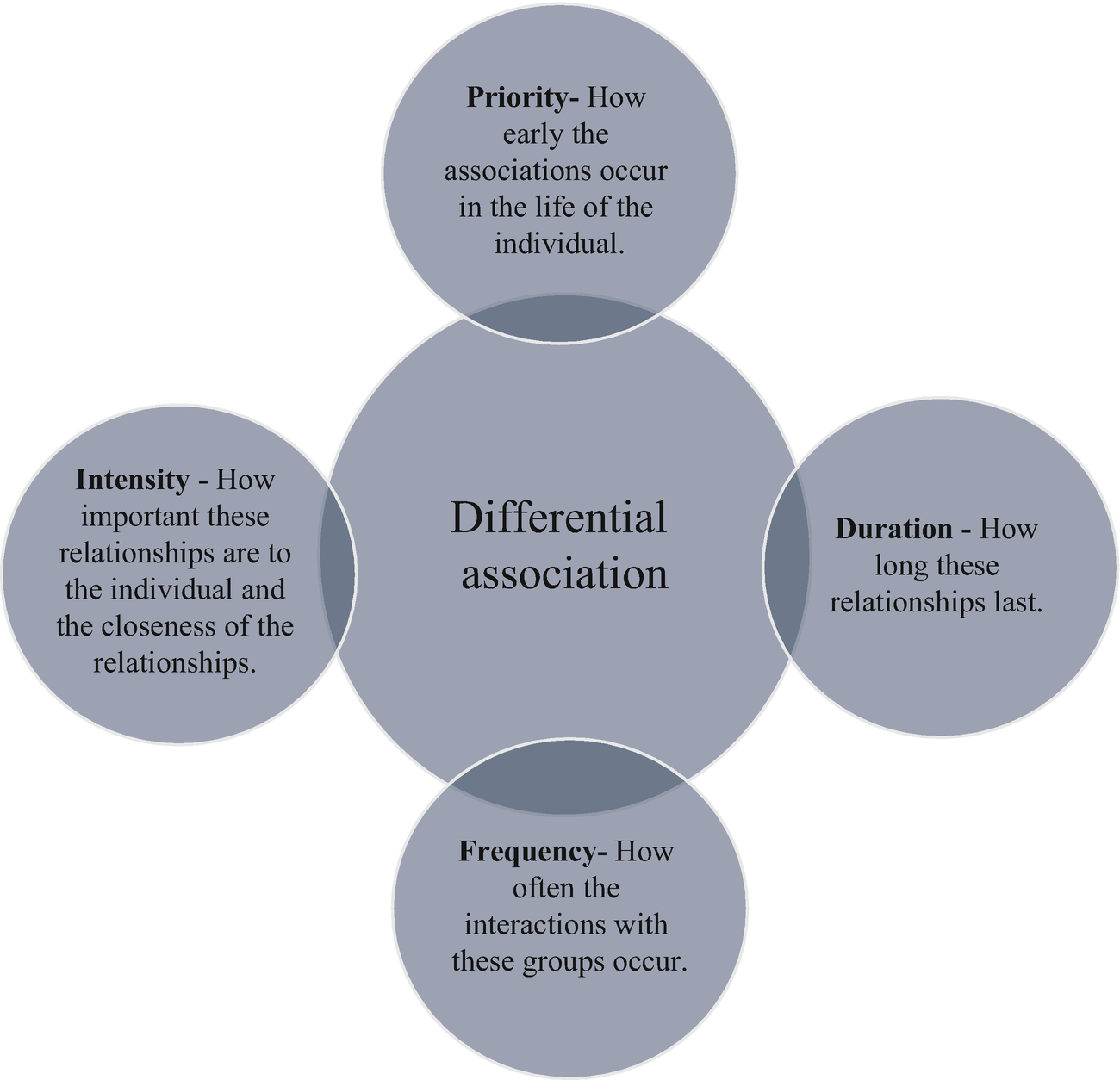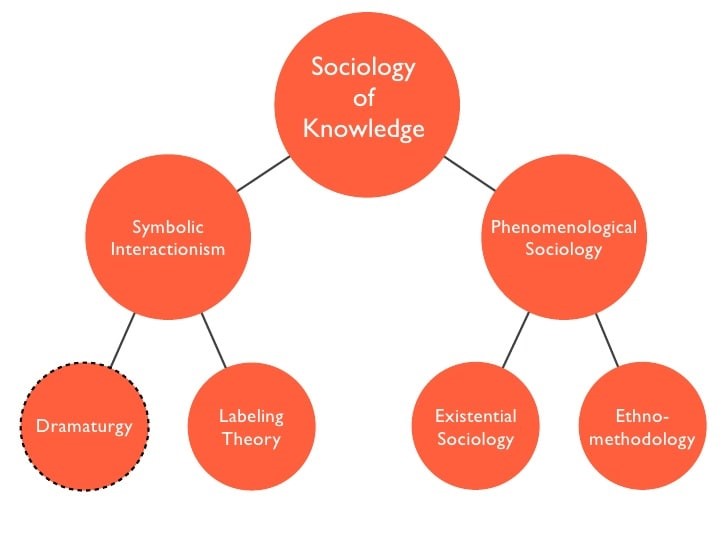Edwin Sutherland-Theory, Biography, and Quotes
Edwin’s Theory of Differential Association
In 1940, Edwin Sutherland introduced a new theory in his presidential address at the American Sociological Society, titled Differential Association. The theory states that criminal behavior is learned. It is a result of differential associations between an individual and the individuals who participate in criminal acts.
Sutherland argued that a person learning criminal behavior involves associating and verbally communicating with those who commit crimes. Only intimate personal groups can succeed in perpetuating an illegal activity.
Social Interaction is the process by which we learn to behave appropriately to the group in which we belong. Our primary influences for behavior are those people with whom we have the closest emotional ties.
Sutherland Differential Association Theory is a particular explanation of criminology. The theory states that just like non-criminal behavior, criminal behavior is learned.
Reasons why People Turn to Criminal Behaviors
According to Sutherland, criminals are not born. Even the most professional thief picked their behavior from other people. Young people who engage in juvenile delinquency learn deviance from those they associate with as they grow.
Below are some of the reasons why people criminal activities:
Social classes
Differential Association Theory is relevant to the development of criminals and ideas about social classes. According to Sutherland, people from disadvantaged backgrounds are more likely to commit crimes. He also argues that there is a relationship between social class and general association patterns.
Sutherland stated that criminals are usually from lower socioeconomic status, while law-abiding citizens are more likely to come from the upper classes. The theory suggests that the lower the group’s socioeconomic status, the greater chance of crime in their lives. He, therefore, concluded that lower socioeconomic status is a crucial risk factor for criminal behavior.
Lack of quality education
Young people who are deprived of quality education are more likely to turn to crime. They commit crimes because they lack employment and business opportunities. This limitation is due to their limited knowledge and skills.
Children who grow up in an environment where parents are educated and have high standards of life tend to follow the same patterns when they grow. Therefore, lack of quality education is a key risk factor for criminal behavior.
Lack of other essential opportunities can cause people to engage in crimes. As stated by Sutherland, criminals come from the lowest social classes because they have little or no opportunities for advancement in their lives. This lack causes them to turn towards criminal activities since it is easier to make a living when one resorts to crime.
Education without moral values
White-collar criminals or corporate criminals usually have a higher level of education than other criminals. This is because they are more likely to be exposed to differential associations through education that promotes crime.
Sutherland argued that the influence of such types of people might enable some white-collar workers to engage in crime, just as it does with blue-collar ones.
Familial relationships and wrong upbringing
According to Sutherland’s Differential Association theory, criminal activity is learned. According to his theory, delinquents engage in crime at a higher rate than non-delinquent groups. Deviance is determined by the nature of association and communication with those who commit crimes.
In some situations, an individual may lack quality familial relationships. As a result, they are more likely to associate with those who commit crimes and learn criminal behavior from them.
Sutherland viewed parents as one of the influential factors in their child’s life. If criminals have children, they may pass criminality on to them. This influence happens due to a lack of knowledge concerning non-criminal behaviors.
Criminals spent most of their time in prison, leaving their children to choose between criminality and non-criminality. Sometimes children don’t even know how to define crime, so they end up glorifying criminal behavior unknowingly.
You may be interested in the broader explanation of the differential association theory and its applications here!
Sutherland’s Biography


Edwin Sutherland is an American criminologist who was the first to identify differential association theory. Differential Association theory says that a person learns criminal behavior by associating with those who commit crimes.
He studied his B. A degree at the Grand Island College later received his Ph.D. from the University of Chicago in 1927. Sutherland spent most of his career teaching at Indiana University, where he was the chair of the Department of Sociology from 1944 to 1955.
During his time at Indiana University, Sutherland became a strong opponent of the death penalty. In his later life, he was also a critic of rigid state laws and was a big proponent of the concept that prisons should be mainly rehabilitative and not just punitive.
Sutherland was the first president of the American Society of Criminology, and his interest in crime came from him being a victim of an armed robbery. He was a professor at Indiana University for most of his life, where he conducted research and taught about crime and criminals.
This theorist wrote the book ‘American Sociology’ published in 1941, and it is still one of the most influential books on sociology.
Edwin contributed significantly to criminology by developing differential association theory, which has been used to explain the learning process that criminals go through to commit crimes. His theory has been widely criticized but is still an influential criminological theory today.
Edwin had substantial convictions and fought for what he believed. These convictions were seen when he wrote a book called ‘Crime and the Community.’ The book criticized how prisons were run at the time, where he argued that prisoners should be rehabilitated instead of just being punished.
During his time, Edwin also addressed white-collar criminality and wrote many books and articles about crime. He stated that people who commit white-collar crimes are not that different from people who commit property or violent crimes. Sutherland died of a heart attack on December 21, 1950.
Sutherland Quotes
“If we are to prevent crime, we must employ methods which will work effectively with the individual criminal.”
“The significance of a piece of behavior lies in the way it is regarded by others, rather than in the nature of the behavior itself.”
“The prime requirement for a stable, peaceful society is a high degree of general agreement in the definitions of reality.”
“Crime, like disease, is something which invades the body as social organization, determined by ‘non-biological conditions.”
“It is possible to learn not only the words of a language but also how to distort the meaning of the words and how not to use them.”
“choose the right means he must be aware of possible consequences.”
“The degree to which a person is differentiated from others determines the extent of his or her freedom to choose.”
“The major problem which faces any society is the problem of establishing and maintaining order.”
“If we are to prevent crime, we must employ methods which will work effectively with the individual criminal.”
“The individual does not acquire crime as he might acquire the measles. He is not born with it. He comes to be in contact with it, to know and even love it.”
·”The first act of violence that a child learns is that which kills, and the second is that which injures.”
“Crime is learned behavior. The individual does not acquire crime as he might acquire measles. He is not born with it. He comes to be in contact with it, to know and even love it.”
“Punishment is a device society uses to indicate the seriousness with which it regards an infraction. It is a means of convincing offenders that they can gain nothing by violating the law.”
“Laws are the textbooks of civilization.”
“Differential association may be the most important principle for understanding deviant behavior.”
“I am convinced that crime would be decreased if we could bring about a better distribution of income and opportunities for all men to improve their lot in society rather than trying merely to improve the lot of a few.”
“I disagree with those who think that individuals can come to commit crimes by some sort of conditioning or teaching, — by mere association. I believe that this is too simple a solution for the problem.”
“My observations in the field and my reading of the literature led me to undertake a critical examination of the prison system. We have prisons for punishment. That is what they are designed for, but we also have gone on to develop an idealistic goal that every state should provide rehabilitation as well as punishment.”
“I am opposed to capital punishment because I believe that it is as wrong to execute one man as to murder a hundred men.”
“In attempting to do away with crime, we are trying something really impossible, since we are trying to do away with man’s free will and his power of making decisions.
You may be interested in Psychology Constructs
Take Away
Edwin Sutherland was a pioneer in the field of criminology and social psychology. He is one of the most influential scholars in his field, who developed many theories still used today to describe human behavior.
His work has been applied to diverse fields such as criminal justice and education. On December 21, 1950, Sutherland died at 58 from a heart attack while teaching at the University of California-Berkeley.


I‘m a freelance content and SEO writer with a passion for finding the perfect combination of words to capture attention and express a message. I create catchy, SEO-friendly content for websites, blogs, articles, and social media. My experience spans many industries, including health and wellness, technology, education, business, and lifestyle. My clients appreciate my ability to craft compelling stories that engage their target audience, but also help to improve their website’s search engine rankings. I’m also an avid learner and stay up to date on the latest SEO trends. I enjoy exploring new places and reading up on the latest marketing and SEO strategies in my free time.







